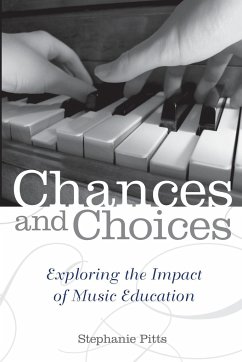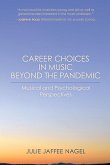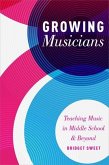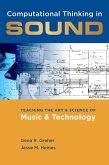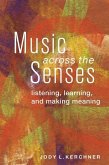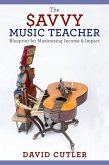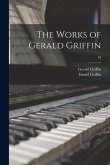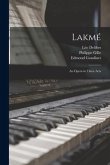- Broschiertes Buch
- Merkliste
- Auf die Merkliste
- Bewerten Bewerten
- Teilen
- Produkt teilen
- Produkterinnerung
- Produkterinnerung
In Chances and Choices, author Stephanie Pitts investigates the long term aims, impact and effects of music education in a school setting. Evaluating the extent to which school music provides a foundation for lifelong involvement and interest in music, Pitts integrates wide-ranging empirical data with a critical review of historical and contemporary debates on the purposes and practices of music teaching and learning. Poised to shed new light on the long-term effects of music education, this book is an important resource to understand how we can encourage lifelong involvement with music and general engagement in cultural activities in every individual.…mehr
Andere Kunden interessierten sich auch für
![Career Choices in Music beyond the Pandemic Career Choices in Music beyond the Pandemic]() Julie Jaffee NagelCareer Choices in Music beyond the Pandemic44,99 €
Julie Jaffee NagelCareer Choices in Music beyond the Pandemic44,99 €![Growing Musicians Growing Musicians]() Bridget SweetGrowing Musicians32,99 €
Bridget SweetGrowing Musicians32,99 €![Computational Thinking in Sound Computational Thinking in Sound]() Gena R. GreherComputational Thinking in Sound48,99 €
Gena R. GreherComputational Thinking in Sound48,99 €![Music Across the Senses Music Across the Senses]() Jody L. KerchnerMusic Across the Senses35,99 €
Jody L. KerchnerMusic Across the Senses35,99 €![The Savvy Music Teacher The Savvy Music Teacher]() David CutlerThe Savvy Music Teacher41,99 €
David CutlerThe Savvy Music Teacher41,99 €![The Works of Gerald Griffin; 10 The Works of Gerald Griffin; 10]() Gerald GriffinThe Works of Gerald Griffin; 1027,99 €
Gerald GriffinThe Works of Gerald Griffin; 1027,99 €![Lakmé: an Opera in Three Acts Lakmé: an Opera in Three Acts]() Léo DelibesLakmé: an Opera in Three Acts18,99 €
Léo DelibesLakmé: an Opera in Three Acts18,99 €-
-
-
In Chances and Choices, author Stephanie Pitts investigates the long term aims, impact and effects of music education in a school setting. Evaluating the extent to which school music provides a foundation for lifelong involvement and interest in music, Pitts integrates wide-ranging empirical data with a critical review of historical and contemporary debates on the purposes and practices of music teaching and learning. Poised to shed new light on the long-term effects of music education, this book is an important resource to understand how we can encourage lifelong involvement with music and general engagement in cultural activities in every individual.
Hinweis: Dieser Artikel kann nur an eine deutsche Lieferadresse ausgeliefert werden.
Hinweis: Dieser Artikel kann nur an eine deutsche Lieferadresse ausgeliefert werden.
Produktdetails
- Produktdetails
- Verlag: OUP US
- Seitenzahl: 234
- Erscheinungstermin: 11. Juli 2012
- Englisch
- Abmessung: 234mm x 156mm x 14mm
- Gewicht: 405g
- ISBN-13: 9780199838776
- ISBN-10: 0199838771
- Artikelnr.: 34740320
- Herstellerkennzeichnung
- Libri GmbH
- Europaallee 1
- 36244 Bad Hersfeld
- gpsr@libri.de
- Verlag: OUP US
- Seitenzahl: 234
- Erscheinungstermin: 11. Juli 2012
- Englisch
- Abmessung: 234mm x 156mm x 14mm
- Gewicht: 405g
- ISBN-13: 9780199838776
- ISBN-10: 0199838771
- Artikelnr.: 34740320
- Herstellerkennzeichnung
- Libri GmbH
- Europaallee 1
- 36244 Bad Hersfeld
- gpsr@libri.de
Stephanie Pitts is Senior Lecturer and Director of Undergraduate Studies at the Music Department of the University of Sheffield, and author of Valuing Musical Participation: Case Studies of Music Identity and Belonging (Ashgate Ltd., 2005) and, with Eric Clarke and Nicola Dibben, Music and Mind in Everyday Life (OUP, 2009).
* Chapter 1: Investigating the impact of music education
* 1.1 Whose story? Defining and interpreting musical life histories
* 1.2 Aims, scope and limitations
* 1.3 Approaches to data collection and analysis
* 1.4 Existing research on musical life histories
* 1.5 Global perspectives on music education
* 1.6 Structures and voices in this book
* Interlude A
* Interlude B
* Chapter 2: Learning across generations: musical childhoods in
twentieth century Britain
* 2.1 Lifelong learning: a reasonable aim for music education?
* 2.2 Life histories in context: British music education in the
twentieth century
* 2.3 Generational trends in formative musical experiences
* 2.3.1 1930s-1950s: gramophones, piano lessons and school assemblies
* 2.3.2 1960s-1970s: encouragement and independence
* 2.3.3 1980s-1990s: musical pluralism and exploration
* 2.4 Historical trends, current debates
* 2.4.1 Classroom music
* 2.4.2 Music outside the classroom
* 2.4.3 Teacher and parent attitudes
* 2.4.4 Music in the home
* 2.4.5 Lifelong learning and involvement
* Interlude C
* Interlude D
* Chapter 3: Locations for musical learning
* 3.1 Where musical learning happens
* 3.2 The characteristics of supportive musical environments
* 3.3 Extra-curricular music-making
* 3.4 Musical self-education
* 3.5 An Italian perspective - music as specialist education
* 3.6 Summary: situated learning for music
* Interlude E
* Interlude F
* Chapter 4: freeiring, affirming, challenging: significant people in
musical learning 106
* 4.1 What makes a memorable classroom music teacher?
* 4.2 Instrumental teachers as mentors
* 4.3 Parents as role models and mentors
* 4.4 Siblings, extended family and friendships as sources of musical
learning
* 4.5 Learning from learning: becoming teachers and parents
* 4.6 Summary: musical supporters and role models
* Interlude G
* Interlude H
* Chapter 5: Opportunities and outcomes in lifelong musical engagement
* 5.1 Musical routes and roots
* 5.2 Becoming music educators
* 5.3 Becoming music-makers
* 5.4 Becoming adult learners
* 5.5 Becoming listeners and concert-goers
* 5.6 Summary: foundations for lifelong musical involvement
* Interlude I
* Interlude J
* Chapter 6: Rhetoric and reality: the real impact of music education
* 6.1 Overview: learning from life histories
* 6.2 Historical rhetoric and remembered reality
* 6.3 Contemporary rhetoric and future opportunities
* 6.4 Summary: relevance and timelessness in musical learning
* Interlude K
* Interlude L
* Chapter 7: Chances, choices and conclusions
* 7.1 Chances and choices in musical education
* 7.2 The usefulness of life history approaches
* 7.3 Recommendations and future directions
* Postlude
* Glossary
* References
* Index
* 1.1 Whose story? Defining and interpreting musical life histories
* 1.2 Aims, scope and limitations
* 1.3 Approaches to data collection and analysis
* 1.4 Existing research on musical life histories
* 1.5 Global perspectives on music education
* 1.6 Structures and voices in this book
* Interlude A
* Interlude B
* Chapter 2: Learning across generations: musical childhoods in
twentieth century Britain
* 2.1 Lifelong learning: a reasonable aim for music education?
* 2.2 Life histories in context: British music education in the
twentieth century
* 2.3 Generational trends in formative musical experiences
* 2.3.1 1930s-1950s: gramophones, piano lessons and school assemblies
* 2.3.2 1960s-1970s: encouragement and independence
* 2.3.3 1980s-1990s: musical pluralism and exploration
* 2.4 Historical trends, current debates
* 2.4.1 Classroom music
* 2.4.2 Music outside the classroom
* 2.4.3 Teacher and parent attitudes
* 2.4.4 Music in the home
* 2.4.5 Lifelong learning and involvement
* Interlude C
* Interlude D
* Chapter 3: Locations for musical learning
* 3.1 Where musical learning happens
* 3.2 The characteristics of supportive musical environments
* 3.3 Extra-curricular music-making
* 3.4 Musical self-education
* 3.5 An Italian perspective - music as specialist education
* 3.6 Summary: situated learning for music
* Interlude E
* Interlude F
* Chapter 4: freeiring, affirming, challenging: significant people in
musical learning 106
* 4.1 What makes a memorable classroom music teacher?
* 4.2 Instrumental teachers as mentors
* 4.3 Parents as role models and mentors
* 4.4 Siblings, extended family and friendships as sources of musical
learning
* 4.5 Learning from learning: becoming teachers and parents
* 4.6 Summary: musical supporters and role models
* Interlude G
* Interlude H
* Chapter 5: Opportunities and outcomes in lifelong musical engagement
* 5.1 Musical routes and roots
* 5.2 Becoming music educators
* 5.3 Becoming music-makers
* 5.4 Becoming adult learners
* 5.5 Becoming listeners and concert-goers
* 5.6 Summary: foundations for lifelong musical involvement
* Interlude I
* Interlude J
* Chapter 6: Rhetoric and reality: the real impact of music education
* 6.1 Overview: learning from life histories
* 6.2 Historical rhetoric and remembered reality
* 6.3 Contemporary rhetoric and future opportunities
* 6.4 Summary: relevance and timelessness in musical learning
* Interlude K
* Interlude L
* Chapter 7: Chances, choices and conclusions
* 7.1 Chances and choices in musical education
* 7.2 The usefulness of life history approaches
* 7.3 Recommendations and future directions
* Postlude
* Glossary
* References
* Index
* Chapter 1: Investigating the impact of music education
* 1.1 Whose story? Defining and interpreting musical life histories
* 1.2 Aims, scope and limitations
* 1.3 Approaches to data collection and analysis
* 1.4 Existing research on musical life histories
* 1.5 Global perspectives on music education
* 1.6 Structures and voices in this book
* Interlude A
* Interlude B
* Chapter 2: Learning across generations: musical childhoods in
twentieth century Britain
* 2.1 Lifelong learning: a reasonable aim for music education?
* 2.2 Life histories in context: British music education in the
twentieth century
* 2.3 Generational trends in formative musical experiences
* 2.3.1 1930s-1950s: gramophones, piano lessons and school assemblies
* 2.3.2 1960s-1970s: encouragement and independence
* 2.3.3 1980s-1990s: musical pluralism and exploration
* 2.4 Historical trends, current debates
* 2.4.1 Classroom music
* 2.4.2 Music outside the classroom
* 2.4.3 Teacher and parent attitudes
* 2.4.4 Music in the home
* 2.4.5 Lifelong learning and involvement
* Interlude C
* Interlude D
* Chapter 3: Locations for musical learning
* 3.1 Where musical learning happens
* 3.2 The characteristics of supportive musical environments
* 3.3 Extra-curricular music-making
* 3.4 Musical self-education
* 3.5 An Italian perspective - music as specialist education
* 3.6 Summary: situated learning for music
* Interlude E
* Interlude F
* Chapter 4: freeiring, affirming, challenging: significant people in
musical learning 106
* 4.1 What makes a memorable classroom music teacher?
* 4.2 Instrumental teachers as mentors
* 4.3 Parents as role models and mentors
* 4.4 Siblings, extended family and friendships as sources of musical
learning
* 4.5 Learning from learning: becoming teachers and parents
* 4.6 Summary: musical supporters and role models
* Interlude G
* Interlude H
* Chapter 5: Opportunities and outcomes in lifelong musical engagement
* 5.1 Musical routes and roots
* 5.2 Becoming music educators
* 5.3 Becoming music-makers
* 5.4 Becoming adult learners
* 5.5 Becoming listeners and concert-goers
* 5.6 Summary: foundations for lifelong musical involvement
* Interlude I
* Interlude J
* Chapter 6: Rhetoric and reality: the real impact of music education
* 6.1 Overview: learning from life histories
* 6.2 Historical rhetoric and remembered reality
* 6.3 Contemporary rhetoric and future opportunities
* 6.4 Summary: relevance and timelessness in musical learning
* Interlude K
* Interlude L
* Chapter 7: Chances, choices and conclusions
* 7.1 Chances and choices in musical education
* 7.2 The usefulness of life history approaches
* 7.3 Recommendations and future directions
* Postlude
* Glossary
* References
* Index
* 1.1 Whose story? Defining and interpreting musical life histories
* 1.2 Aims, scope and limitations
* 1.3 Approaches to data collection and analysis
* 1.4 Existing research on musical life histories
* 1.5 Global perspectives on music education
* 1.6 Structures and voices in this book
* Interlude A
* Interlude B
* Chapter 2: Learning across generations: musical childhoods in
twentieth century Britain
* 2.1 Lifelong learning: a reasonable aim for music education?
* 2.2 Life histories in context: British music education in the
twentieth century
* 2.3 Generational trends in formative musical experiences
* 2.3.1 1930s-1950s: gramophones, piano lessons and school assemblies
* 2.3.2 1960s-1970s: encouragement and independence
* 2.3.3 1980s-1990s: musical pluralism and exploration
* 2.4 Historical trends, current debates
* 2.4.1 Classroom music
* 2.4.2 Music outside the classroom
* 2.4.3 Teacher and parent attitudes
* 2.4.4 Music in the home
* 2.4.5 Lifelong learning and involvement
* Interlude C
* Interlude D
* Chapter 3: Locations for musical learning
* 3.1 Where musical learning happens
* 3.2 The characteristics of supportive musical environments
* 3.3 Extra-curricular music-making
* 3.4 Musical self-education
* 3.5 An Italian perspective - music as specialist education
* 3.6 Summary: situated learning for music
* Interlude E
* Interlude F
* Chapter 4: freeiring, affirming, challenging: significant people in
musical learning 106
* 4.1 What makes a memorable classroom music teacher?
* 4.2 Instrumental teachers as mentors
* 4.3 Parents as role models and mentors
* 4.4 Siblings, extended family and friendships as sources of musical
learning
* 4.5 Learning from learning: becoming teachers and parents
* 4.6 Summary: musical supporters and role models
* Interlude G
* Interlude H
* Chapter 5: Opportunities and outcomes in lifelong musical engagement
* 5.1 Musical routes and roots
* 5.2 Becoming music educators
* 5.3 Becoming music-makers
* 5.4 Becoming adult learners
* 5.5 Becoming listeners and concert-goers
* 5.6 Summary: foundations for lifelong musical involvement
* Interlude I
* Interlude J
* Chapter 6: Rhetoric and reality: the real impact of music education
* 6.1 Overview: learning from life histories
* 6.2 Historical rhetoric and remembered reality
* 6.3 Contemporary rhetoric and future opportunities
* 6.4 Summary: relevance and timelessness in musical learning
* Interlude K
* Interlude L
* Chapter 7: Chances, choices and conclusions
* 7.1 Chances and choices in musical education
* 7.2 The usefulness of life history approaches
* 7.3 Recommendations and future directions
* Postlude
* Glossary
* References
* Index

